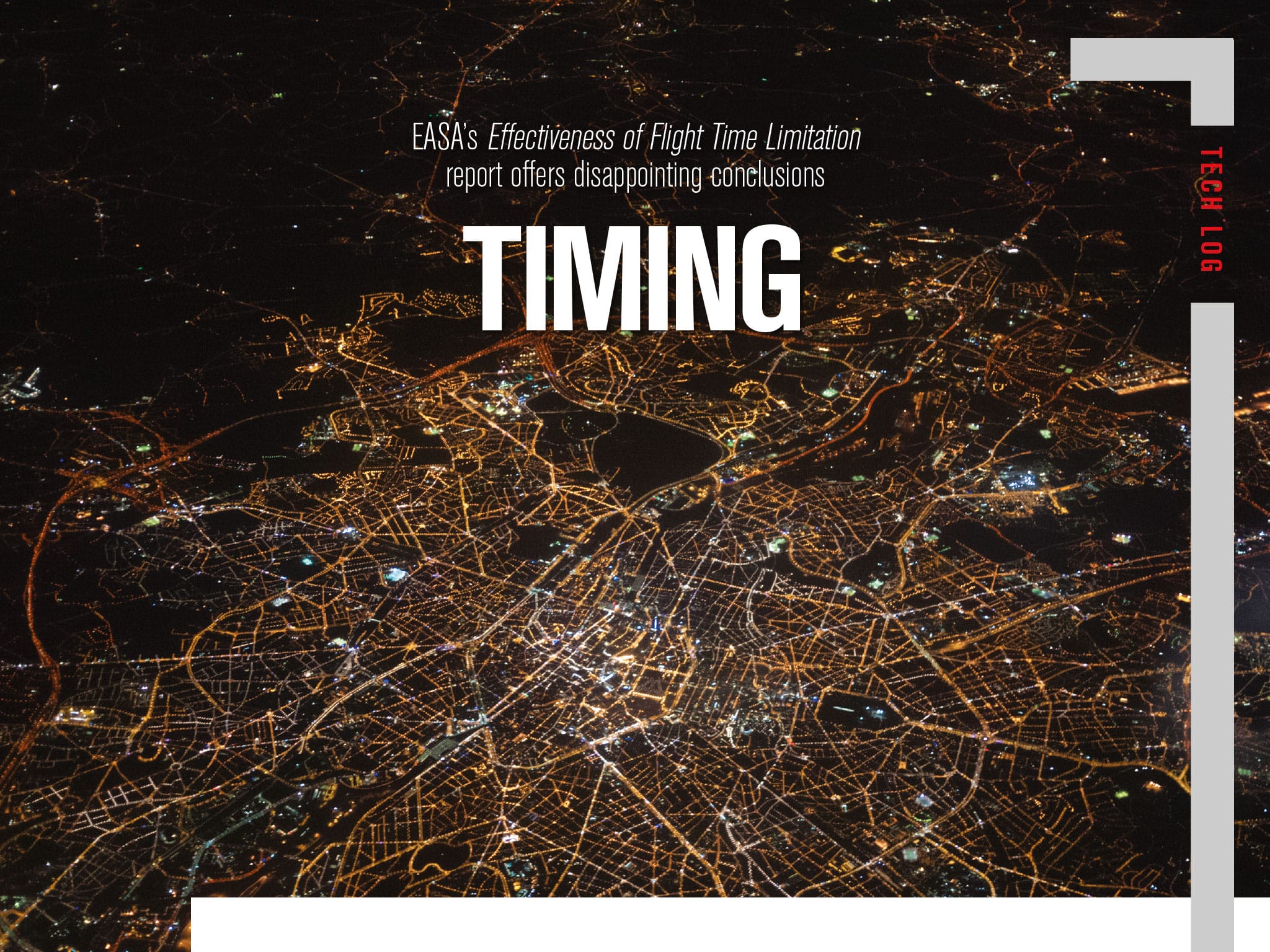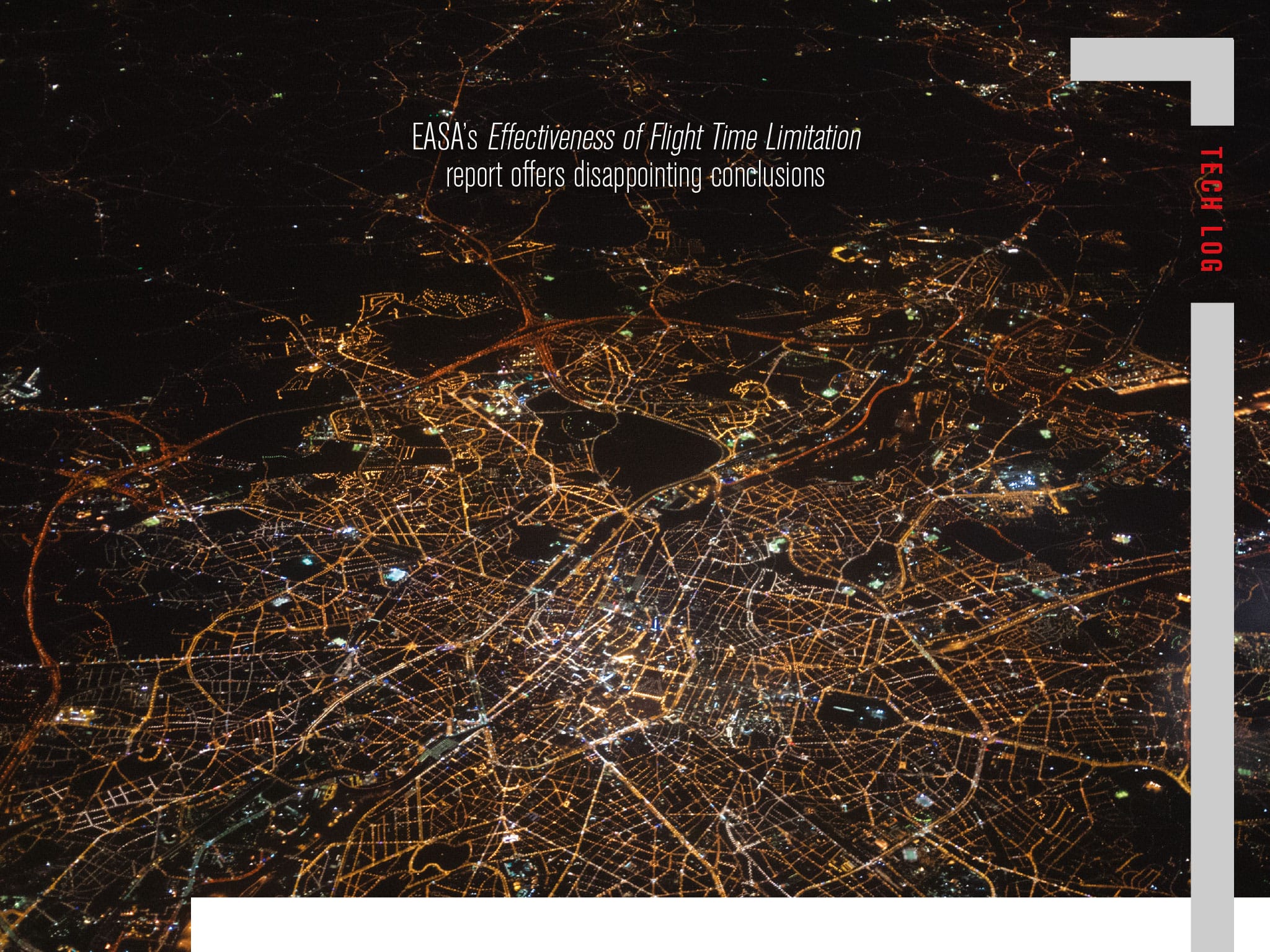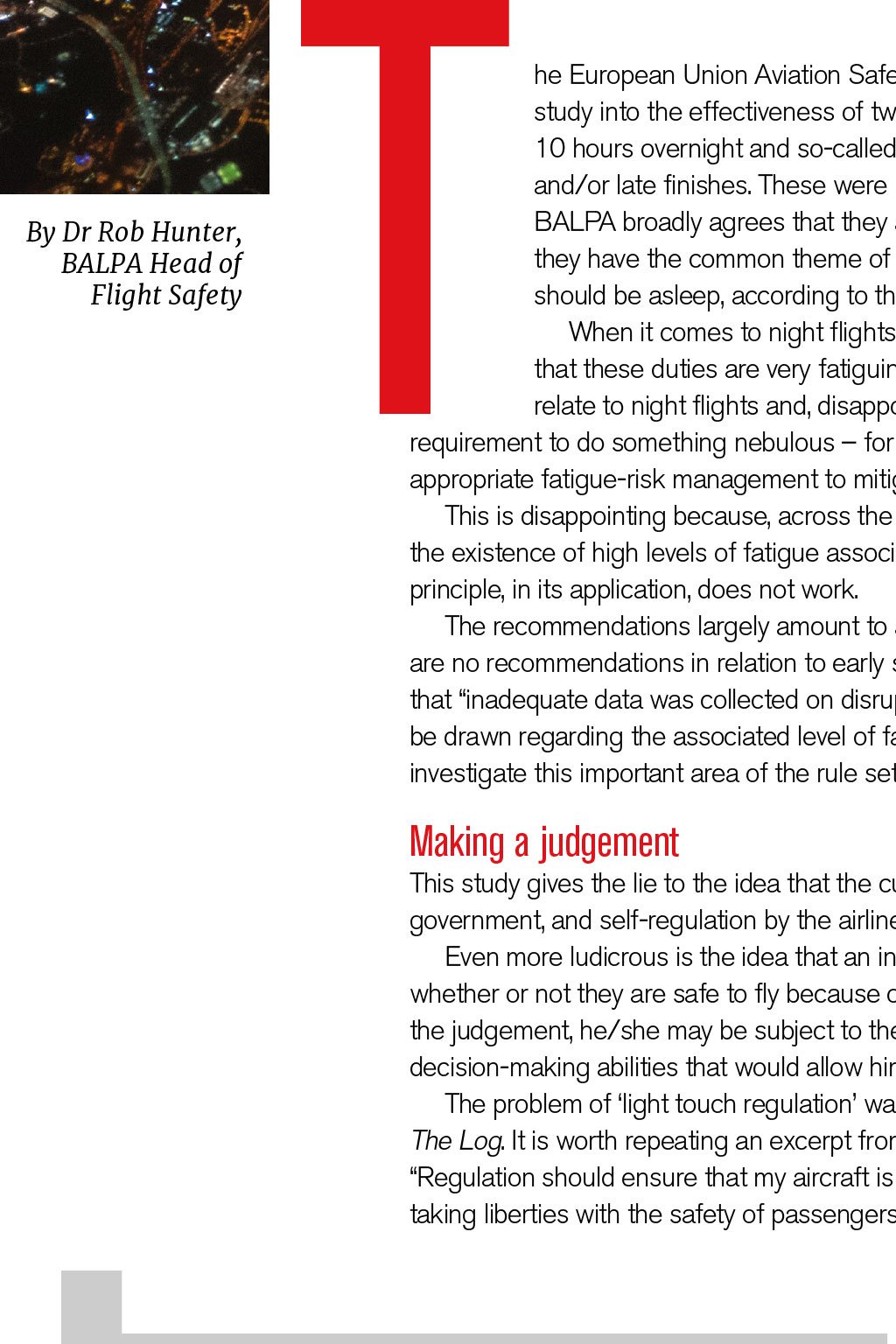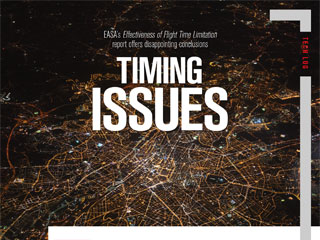








TIMING ISSUES By Dr Rob Hunter, BALPA Head of Flight Safety T he European Union Aviation Safety Agency (EASA) has recently published a study into the effectiveness of two areas of their rule set: duties of more than 10 hours overnight and so-called disruptive schedules that involve early starts and/or late finishes. These were identified from stakeholder surveys, and BALPA broadly agrees that they are important areas of concern. Moreover, they have the common theme of a pilot being on duty at a time when they should be asleep, according to their body clock. When it comes to night flights, the study endorses the pilot experience that these duties are very fatiguing. All six of the studys recommendations relate to night flights and, disappointingly, mostly amount to a firm requirement to do something nebulous for example, recommendation two says apply appropriate fatigue-risk management to mitigate the fatiguing effect. This is disappointing because, across the entire rule set, this principle already applies; the existence of high levels of fatigue associated with these duties demonstrate that the principle, in its application, does not work. The recommendations largely amount to a restatement of an existing platitude. There are no recommendations in relation to early starts. EASAs scientific committee stated that inadequate data was collected on disruptive schedules to enable conclusions to be drawn regarding the associated level of fatigue. In plain terms, the study failed to investigate this important area of the rule set. Making a judgement This study gives the lie to the idea that the current regimes hands off regulation by government, and self-regulation by the airlines, is effective and safe. Even more ludicrous is the idea that an individual pilot can make the judgement about whether or not they are safe to fly because of fatigue, when, at the time they are making the judgement, he/she may be subject to the very fatigue condition that could impair the decision-making abilities that would allow him/her to make that safety-critical judgement. The problem of light touch regulation was discussed in the Spring 18 issue of The Log. It is worth repeating an excerpt from last years article (A light touch, page 10): Regulation should ensure that my aircraft is safe... it is what prevents employers from taking liberties with the safety of passengers and staff. TECH LOG EASAs Effectiveness of Flight Time Limitation report offers disappointing conclusions